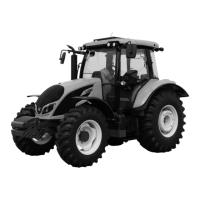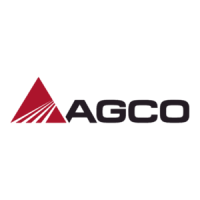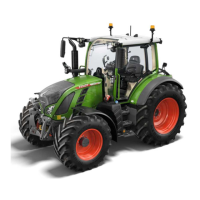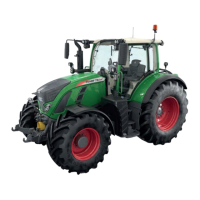Even with an appropriate cab and HVAC system, there are other opportunities for contaminates to enter
the cab. While outside the cab, a person can become contaminated on his/her body or clothing.
Contaminated objects can be brought into the cab. Another potential for cab contamination exists when
doors or windows are open in a contaminated environment.
Health and safety for agricultural machine operators as well as others working in, on or around these
machines are addressed through a comprehensive program. Such a program is defined as an Occupational
Health and Safety Management System (OHSMS). While cabs may be used as an eective engineering
control within an OHSMS, this is not intended to imply that the cab alone is appropriate for any specific
application.
That determination can only be made by those responsible for the OHSMS in a specific application. It is the
responsibility of those charged with managing the use of the vehicle on which the cab is attached to define
and manage an appropriate OHSMS, and ensure that all federal, state and local regulatory requirements are
followed.
Cabs should not be used as a replacement for any other engineering control or PPE that has been
specifically required by federal, state or local regulatory authorities.
Hierarchy of Controls
The Hierarchy of Controls, in their preferred order of action:
1. Elimination
2. Substitution of less hazardous materials, processes, operations or equipment
3. Engineering controls
4. Warnings
5. Administrative controls
6. Personal protective equipment (PPE)
Continuous Improvement Cycle
Cabs must be used only to control operator air contaminant exposures within an OHSMS. This
management system must consider occupational safety and health as a continuous improvement cycle
that includes these on-going processes:
1. Management, Leadership and Employee Participation: This step in the cycle involves the formulation of
the management system, the establishment of policy, statements of responsibility and the integration
of the employees into the management system.
2. Planning: This step is based upon initial and going reviews of the management system and numerous
factors aecting occupational safety and health within an organization. Included in these reviews is a
review of the hazard, risks and controls and data collected to evaluate the hazards and the ecacy of
the control measures. In explanatory comments, exposure measurements are included as part of the
assessment processes. The results of audits and measurements are also to be reviewed.
3. Implementation and Operation: This section describes the organization components of a occupational
safety and health program. It describes the hierarchy of controls mentioned above and several broad
classes of management function. Among these requirements are employee training and evaluation of
employee training. Furthermore, this section requires a written, clearly documented occupational safety
and health program.
4. Evaluation and Corrective Actions: The section specifically requires management processes to monitor
and evaluate hazards, risks and their controls. Explanatory comments note that this includes quantitative
measures of worker exposure. Practically, this involves physically testing the eciency of the cab being
used as an engineering control within an OHSMS.
5. Management System Review: Management is required to review the management system to ensure
its suitability, adequacy and eectiveness. This cycle includes provisions for exposure monitoring and
the monitoring of control measure performance. It is the responsibility of the manager of the safety and
health program to determine how worker exposure to air contaminants and other hazards are to be
controlled. It is also the responsibility of this manager to take whatever actions are needed to control
work-place hazards. This includes but is not limited to exposure assessment, audits of varies programs
such respiratory protection, ventilation system maintenance, etc.
2. Safety instructions and safety items - Warranty
30
ACW2184250

